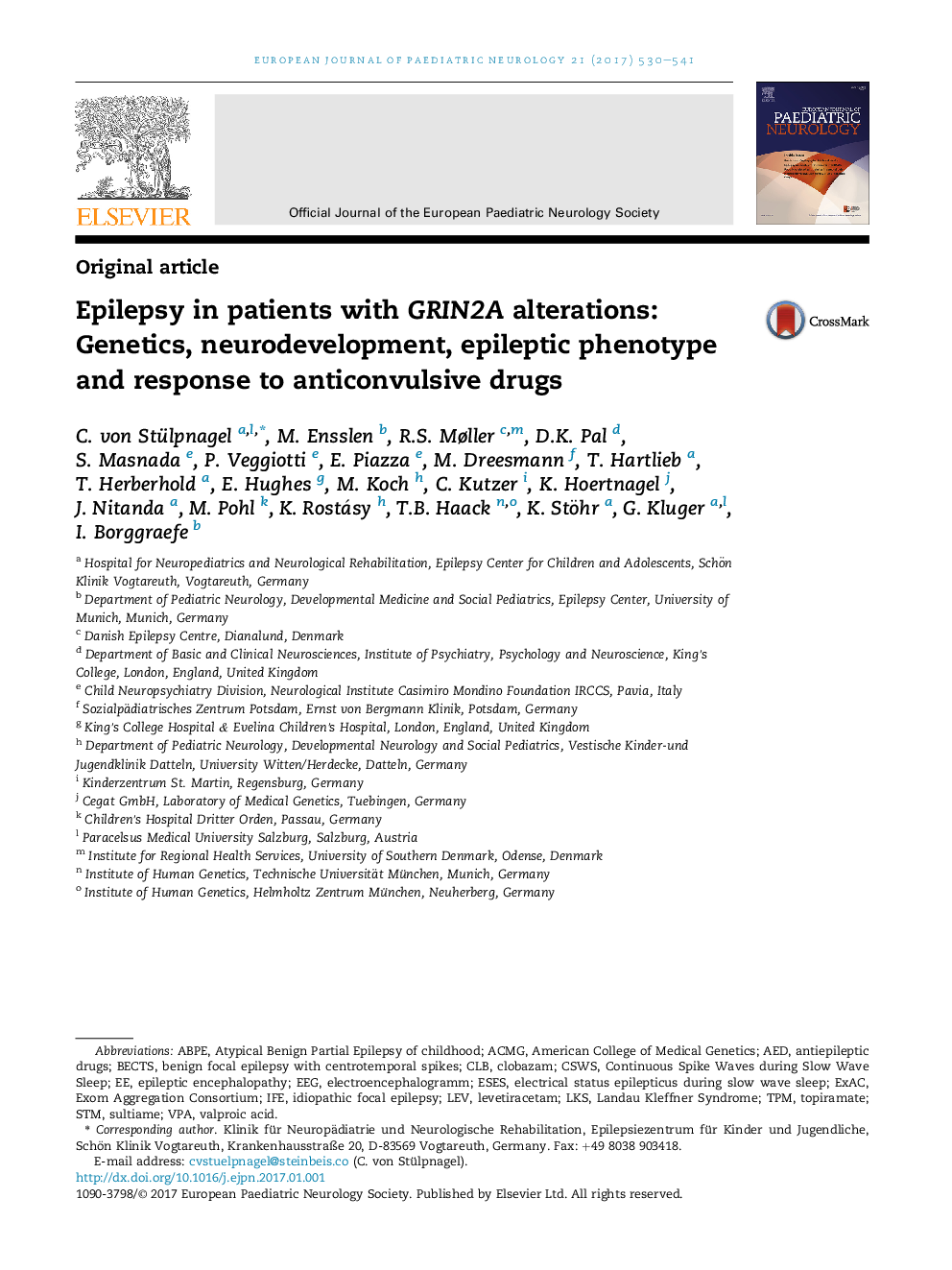| Article ID | Journal | Published Year | Pages | File Type |
|---|---|---|---|---|
| 5628886 | European Journal of Paediatric Neurology | 2017 | 12 Pages |
â¢Retrospective study of 7/19 patients with epilepsy and GRIN2A alteration.â¢First report on the effect of commonly used AED in patients with GRIN2A mutations.â¢Patients present with different clinical phenotypes and a spectrum of seizure types.â¢GRIN2A patients responded well to commonly used drugs in idiopathic focal epilepsy.â¢Above all to VPA, STM, CLB and Steroids.
ObjectiveTo delineate the genetic, neurodevelopmental and epileptic spectrum associated with GRIN2A alterations with emphasis on epilepsy treatment.MethodsRetrospective study of 19 patients (7 females; age: 1-38 years; mean 10.1 years) with epilepsy and GRIN2A alteration. Genetic variants were classified according to the guidelines and recommendations of the American College of Medical Genetics (ACMG). Clinical findings including epilepsy classification, treatment, EEG findings, early childhood development and neurodevelopmental outcome were collected with an electronic questionnaire.Results7 out of 19 patients fulfilled the ACMG-criteria of carrying “pathogenic” or “likely pathogenic variants”, in twelve patients the alterations were classified as variants of unknown significance. The spectrum of pathogenic/likely pathogenic mutations was as follows: nonsense n = 3, missense n = 2, duplications/deletions n = 1 and splice site n = 1. First seizures occurred at a mean age of 2.4 years with heterogeneous seizure types. Patients were treated with a mean of 5.6 AED. 4/5 patients with VPA had an improved seizure frequency (n = 3 with a truncation: n = 1 missense). 3/5 patients with STM reported an improvement of seizures (n = 2 truncation, n = 1 splicing). 3/5 CLB patients showed an improvement (n = 2: truncation; n = 1 splicing). Steroids were reported to have a positive effect on seizure frequency in 3/5 patients (n = 1 each truncation, splicing or deletion).ConclusionsOur data indicate that children with epilepsy due to pathogenic GRIN2A mutations present with different clinical phenotypes and a spectrum of seizure types in the context of a pharmacoresistant epilepsy providing information for clinicians treating children with this form of genetically determined epileptic syndrome.
